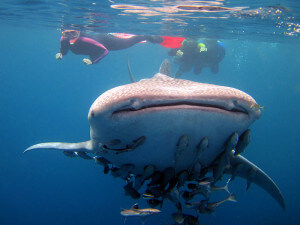Snorkeling the Visayan islands of the Philippines!
 Here is a recipe that produces tremendous snorkeling opportunities: Thousands of beautiful, beach-lined islands surrounded by warm, tropical waters that contain shallow fringing reefs teeming with life. We call this recipe: The Philippines.
Here is a recipe that produces tremendous snorkeling opportunities: Thousands of beautiful, beach-lined islands surrounded by warm, tropical waters that contain shallow fringing reefs teeming with life. We call this recipe: The Philippines.x
There are 7107 islands in the Philippines, making this the second largest archipelago in the world next to Indonesia (which has over 17,000) and as you can imagine, there are a variety of marine habitats throughout the archipelago that possess some of the richest diversity of marine fauna. The islands are surrounded by five major bodies of water and are fringed by over 25,000 km2 of coral reef. The archipelago defines the entire northern portion of the famed coral triangle, an area described as having the highest levels of marine biodiversity in the world. The islands of Leyte in the Eastern Visayas and Bohol in the Central Visayas, have some of the best examples of reef life in the Philippines and it is around these islands that we focus our snorkeling activities.
x
Sogod bay, located at the southern tip of Leyte, is the premier destination for marine enthusiasts. The bay contains a variety of marine habitats with vibrant diverse reefs that provide snorkelers with endless hours of exploration. Between the months of December – April, dozens of whale sharks can be found in the clear, blue waters!
x
While the island of Bohol has several world-class attractions like Chocolate Hills and the Tarsier Sanctuary, it is the small islands around Bohol that command the attention of the snorkeler. Cabilao, Balicasag, and Pamilacan Islands offer amazing snorkeling opportunities that include visits to sea grass beds, clear-water mangroves, sloping coral gardens, and reef flats that lead to sheer vertical drop-offs!
x
Though blessed with a wealth of natural resources, it’s the people and culture that make the Philippines a magnificent travel destination. Several cultural influences over the centuries and the willingness of the people to embrace them and make them uniquely Filipino have resulted in a colorful and fun-loving approach to life. The incredible marine biodiversity in combination with the warmth of the people makes our Philippines snorkeling tour one of our best adventures!
ITINERARY
 Our snorkeling tour begins and ends in Manila, Philippines. One round-trip, internal flight (Manila – Cebu – Manila). Upon arriving in Cebu, we will board the boat and depart for Sogod Bay, Leyte. After our time in Sogod Bay, we will cruise south along the eastern side of Bohol to visit Anda and Pamilacan Island. Heading west from Pamilacan, we will encounter Balicasag and then finish in Cabilao, located along the southwest coast of Bohol. Please note that the following is a general itinerary and that weather, tides, and other unforeseen or unavoidable circumstances may affect the schedule at any time.
Our snorkeling tour begins and ends in Manila, Philippines. One round-trip, internal flight (Manila – Cebu – Manila). Upon arriving in Cebu, we will board the boat and depart for Sogod Bay, Leyte. After our time in Sogod Bay, we will cruise south along the eastern side of Bohol to visit Anda and Pamilacan Island. Heading west from Pamilacan, we will encounter Balicasag and then finish in Cabilao, located along the southwest coast of Bohol. Please note that the following is a general itinerary and that weather, tides, and other unforeseen or unavoidable circumstances may affect the schedule at any time.
Day 1: Manila / Dusit Thani
Meals provided: D
Meet in Manila at our group hotel, the Dusit Thani for the tour orientation and welcome dinner.
Day 2: Cebu / Philippine Siren / Olango Isand
Meals provided: B,L,D
Morning flight to Cebu where we will transfer to the Philippine Siren. Our first stop is at the nearby island of Olongo. The rich reefs that surround this island offer us the chance to see numerous species of fish and corals, and spend time in sea grass habitats. If time permits, we will visit the bird sanctuary on the island and have the chance to see hundreds of species of both resident and migrant birds.
Day 3 – 7: Sogod Bay / Limasawa / Napantao
Meals provided: B,L,D
Sogod Bay, located near the southwestern tip of Leyte, is a deep-water bay that possesses some of the healthiest and diverse reefs in the Philippines. It has nearly a dozen marine sanctuaries, some which have been actively managed for over a decade, and a favorite stop-off for whale sharks as they migrate through the archipelago. To date, over one hundred individuals have been catalogued as frequent visitors to the area. We will spend several days visiting snorkel sites like Napantao, Santa Sofia, Limasawa Is., and Tankaan. Of course, we will also dedicate some time to look for the whale sharks for the incredible opportunity to swim with these gentle giants!
Day 8: Anda
Meals provided: B,L,D
The municipality of Anda and Guindalman Bay are located along the southeastern tip of Bohol. The rugged, limestone cliffs that create the coastline make for a spectacular backdrop to the rich reefs that grow right up to the edge of the cliffs. Coral coverage, consisting of both soft and hard corals, is nearly 100% and remains well protected, as these sites are part of the network of local marine sanctuaries. Our day will be spent drifting over the dazzling assemblage of colors and shapes, truly a snorkeler’s dream!
Day 9 – 11: Cabilao / Pamilacan / Balicasag
Meals provided: B,L,D
Our next three days of snorkeling will take place around the islands of Cabilao, Balicasag, and Pamilacan Islands. Each island offers amazing the chance to explore an amazing diversity of habitats including sea grass beds, sloping coral gardens, and reef flats that lead to sheer vertical drop-offs! We will spend our days exploring all of these amazing habitats as well as visit the Tarsier Sanctuary where we can view one of the smallest primates in the world in their natural habitat.
Day 12: Cebu / Manila / Dusit Thani
Meals provided: B,L,D
Disembark and transfer to the airport for our flight to Manila. Upon arrival, transfer to Dusit Thani. Farewell dinner in the evening.
Day 13: International flights or extensions
Meals provided: B
DEPARTURES
We are currently exploring dates for this departure. Please Contact Us for more information
Accommodations: S/Y Philippine Siren
Guides: TBD
Tour cost includes:
- Accommodations on day 1 through day 13
- All meals on days 2 through 12 (dinner on day 1 – breakfast on day 13)
- All internal transfers including international arrival and departure transfers
- Non-alcoholic beverages
- All snorkeling and park fees
- All gratuities
Tour cost does not include:
- Round-trip international airfare (Please contact us with recommendations for routes or referrals to any of the several travel agents we currently work with)
- Additional hotel accommodations and meals as a result of travel outside of the program dates
- Visa requirements including payments
- Alcoholic beverages
- International departure taxes
- Extra / overweight baggage fees
- Trip insurance (recommended; (we recommend Travel Guard, World Nomads, or Travel Insure)
- DAN insurance (required unless personal insurance program has worldwide emergency evacuation services)
- Additional accommodations while on tour in the event of flight schedule changes or events of force majeure
- Fuel surcharges (if applicable)
Cancellation policy:
180 – 91 days prior to departure: 50% of trip cost
90 days or less prior to departure: 100% of tour cost
Please see our Terms and Conditions
ACCOMMODATIONS
We use the finest live-aboard boat in the Philippines to host us on snorkeling adventures in the Central Visayas, the S/Y Philippine Siren. In Manila, we stay at the Dusit Thani. Please visit our accommodations page for more photos or use the link to visit the resort/live-aboard website.
S/Y PHILIPPINE SIREN
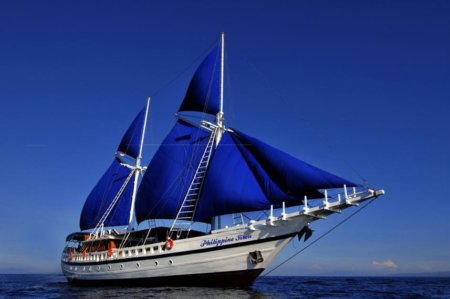 The 40 meter S/Y Philippine Siren luxury diving live-aboard was designed and built using the lessons learnt from our first yacht the S/Y Siren and has been modified to better suit the growing needs of our guests. Built on the Indonesian Island of Sulawesi, she is a traditional “gaft-rigged Phinisi” handcrafted from ironwood and teak. The Philippine Siren is a modern and spacious diving live-aboard. The eight cabins are all situated forward of the engine room with two cabins located at the bow and six cabins throughout the remaining lower deck quarters. The outdoor dining area offers a superb setting for all your meals, with comfortable bench seating set in a semi-circular shape. The dive deck is likely one of the most spacious you will have come across.
The 40 meter S/Y Philippine Siren luxury diving live-aboard was designed and built using the lessons learnt from our first yacht the S/Y Siren and has been modified to better suit the growing needs of our guests. Built on the Indonesian Island of Sulawesi, she is a traditional “gaft-rigged Phinisi” handcrafted from ironwood and teak. The Philippine Siren is a modern and spacious diving live-aboard. The eight cabins are all situated forward of the engine room with two cabins located at the bow and six cabins throughout the remaining lower deck quarters. The outdoor dining area offers a superb setting for all your meals, with comfortable bench seating set in a semi-circular shape. The dive deck is likely one of the most spacious you will have come across.
DUSIT THANI
 Dusit Thani Manila is a 4.5-star property is located in the heart of Makati, as is a walking distance from SM Makati, Glorietta Mall, Ayala Center, Ayala Museum. Each of the 537 air-conditioned rooms features a minibar and flat-screen television, complimentary wired and wireless Internet access, and cable programming. Bathrooms have complimentary toiletries and hair dryers. Pamper yourself with a visit to the spa, which offers massages, body treatments, and facials.
Dusit Thani Manila is a 4.5-star property is located in the heart of Makati, as is a walking distance from SM Makati, Glorietta Mall, Ayala Center, Ayala Museum. Each of the 537 air-conditioned rooms features a minibar and flat-screen television, complimentary wired and wireless Internet access, and cable programming. Bathrooms have complimentary toiletries and hair dryers. Pamper yourself with a visit to the spa, which offers massages, body treatments, and facials.
WHAT TO EXPECT
The Philippines are located in the tropical Pacific Ocean, with the Central Visayas about 10 degrees above the equator. Temperatures average around 88º F (31º C) though we may experience slightly cooler temperatures in January and February due to cool air associated with the tail-end of the northeast monsoon that may persist around the archipelago. Water temperatures average around 82º F (28º C), but we can expect temperatures to be a bit cooler in Sogod Bay due the currents in the deep water bay that bring up cooler water form the depths. While we might experience some current on a select few sites, we don’t expect it to be very strong.
Our visit to the Tarsier Sanctuary will include ground transportation from Panglao Island and not require any special foot wear or clothing. The paths at the sanctuary are well established and may only require a brief walk on uneven trails.
Please read more about our daily schedule.
WHAT TO BRING
The following list is a suggestion of things to bring and applies to almost all our trips. Specific items on a particular departure will be noted on the departure information.
-A good fitting mask, snorkel, and set of fins. If your equipment is brand new, please try it out in the pool. Determining the fit and function of your equipment in the pool includes doing several laps with all your equipment on. Doing several snorkel dives is also very beneficial. It is also important to clean your new equipment, especially your mask. Cleaning procedures for your mask include light scrubbing with toothpaste or dishwasher soap to remove the layer of silicon used to preserve the mask during shipping. Clean both sides of the mask. Doing this greatly reduces the chances of having your mask fog. Not doing this, even when using mask de-fogger, usually results in a fogged mask.
-A wetsuit, rash guard, diveskin, or any type of clothing that can be used for thermal and/or protection from the sun. We suggest bringing a full 3mm wetsuit and some type of core insulation like a vest or shirt made of 1 – 2 mm neoprene (e.g., Lavacore or Sharkskin shirts or vests). These items will not only provide thermal protection but protection from the sun as well. For those who feel that a 3mm suit may be too warm, please consider a full body skin or rash guard to ensure protection from the sun. With regards to thermal protection, remember the saying: It is better to have and not need, than to need and not have. One that note…
-Head protection in the form of a wetsuit hood, a cap, or even a bandana. Anything that can keep the sun off your head is extremely important. It is the most exposed part of our bodies when we are floating on the surface.
-Underwater flashlight on departures with a planned night snorkel
-Biodegradable sunscreen lotion. Sunscreen lotions can be harmful and even kill tiny larvae (baby marine life). It is fine to wear on land, but we highly discourage the use of sunscreen lotions in the water. A full wetsuit or dive skin will protect one from the sun much better than lotions and provide thermal protection. It is truly a win-win for everyone and the marine environment.
-Casual, lightweight, tropical clothing
-Sunglasses (and a spare in case you lose your main pair)
-Comfortable footwear such as active sandals (Teva, Keen, Merrell, etc.)
-Hats. We cannot stress the importance of a hat in the tropics!
-All our boats provide items like shampoo, soap, towels, etc. We bring this up because these items represent added weight or may leak.
Other items to consider:
-Lightweight rainwear to protect from the occasional afternoon shower
-Binoculars
TRIP REPORTS
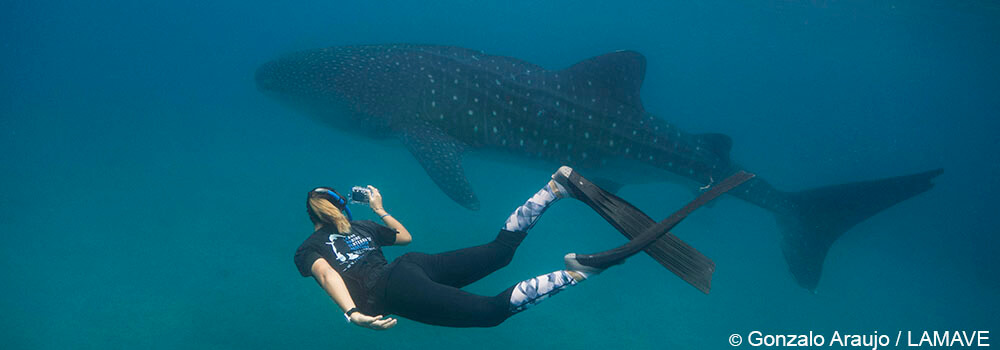
CTA supports Whale Shark Research in the Philippines

Sea Slugs of the Philippines
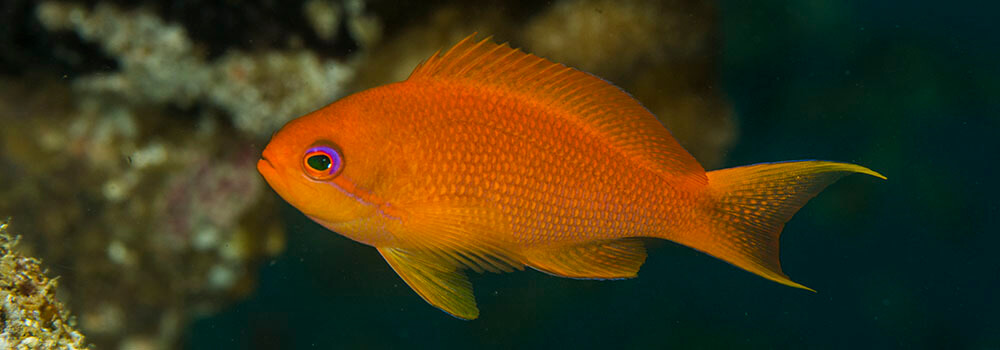
Visayas, Philippines 2017 trip report
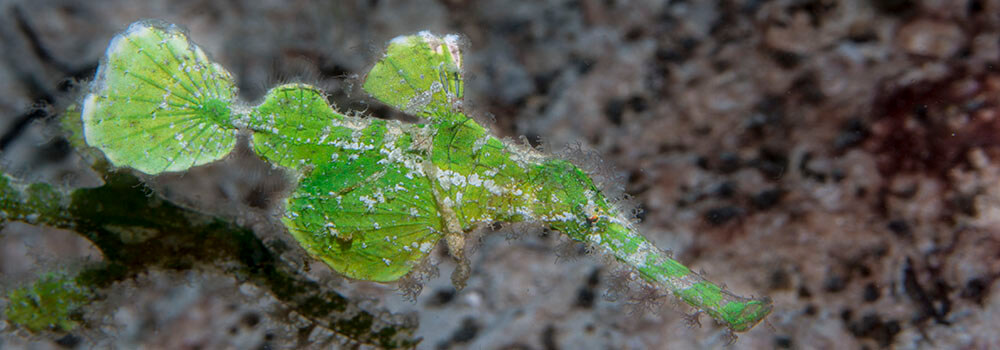
Philippines snorkeling: Dimakya Island, Palawan
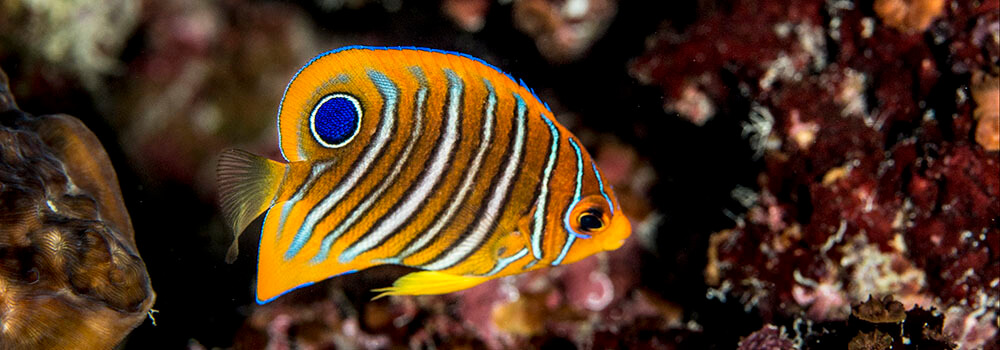
Philippines snorkeling: Cabilao and Pamilacan Islands
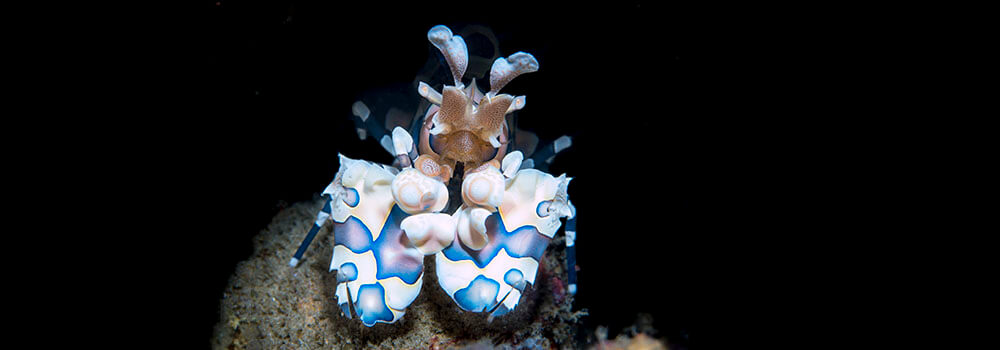
Philippines snorkeling: Sogod Bay, Leyte
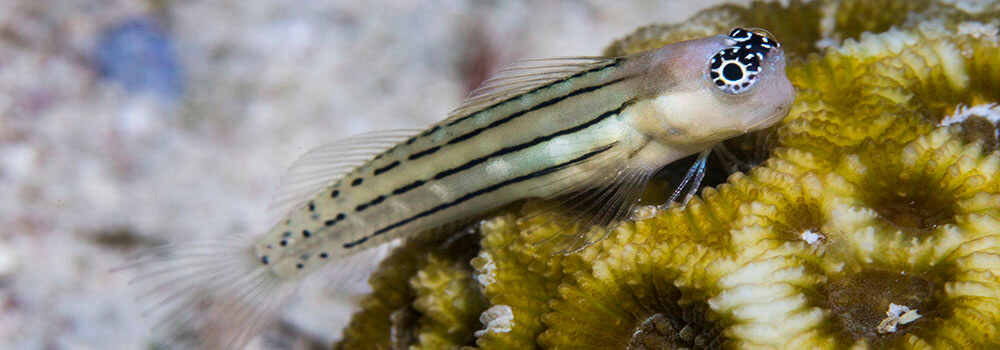
Reef Fishes from the Philippines
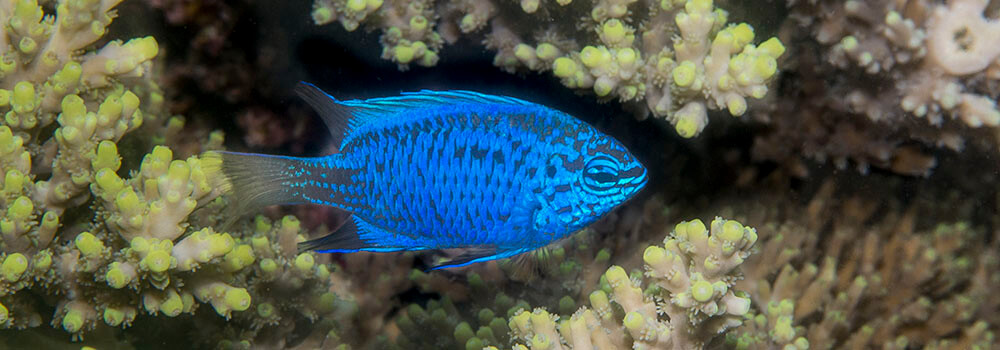
Snorkeling El Nido, Palawan, Philippines

Something fishy is going on in Eastern Indonesia



